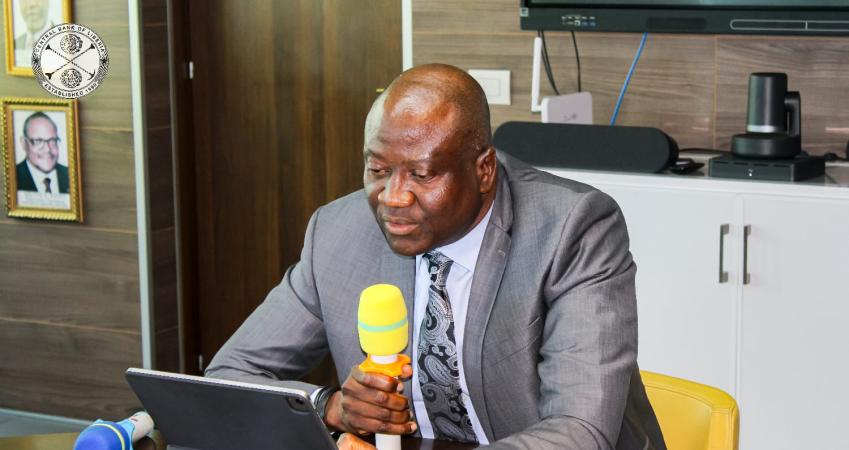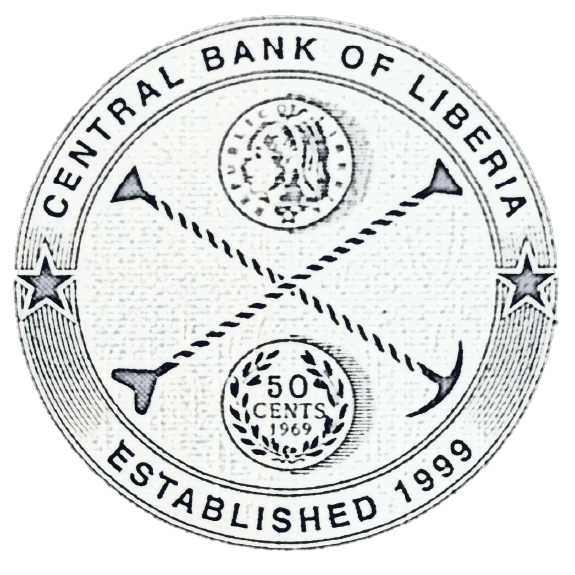
The Central Bank of Liberia’s (CBL) Monetary Policy Committee (MPC) held its second meeting of 2025 on April 9, to assess macroeconomic developments in both the domestic and global economies for the first quarter of 2025. Results of the assessment were used to guide the Bank’s policy stance, with the aim of influencing macroeconomic conditions in the quarters ahead.
Global Macroeconomic Developments
During the meeting, the Committee observed a moderating trend in global inflation, mainly due to tight monetary policy, improved supply chains and easing commodity prices. However, it was noted that inflationary pressure remains elevated in certain economies due to persistent services inflation, food price volatility and structural fragilities. Global headline inflation is projected to moderate to 4.2 percent in 2025, down from 5.7 percent in 2024. Consumer prices in both advanced economies and emerging markets and developing economies are projected to slow to 2.1 percent and 5.6 percent, respectively, in 2025. In Sub-Saharan Africa, it was noted that inflation is expected to significantly decline to 12.3 percent in 2025, however, food prices remain elevated in some economies.
The Committee remained optimistic about the projected moderation in global headline inflation, which reflects policy effectiveness particularly in advanced economies. Nevertheless, persistent inflationary risk across regions coupled with structural vulnerabilities remained the major concerns of unexpected pressure on consumer prices.
The Committee further observed varying movements in global commodity prices (rice, crude oil, rubber, iron ore, gold, etc.) during the first quarter of 2025. The energy sector remained volatile, highlighting ongoing supply and demand uncertainties as the friction surrounding trade, price volatility is expected to persist in the coming quarters.
Domestic Macroeconomic Developments
The MPC noted that the economy was is track in support of the projected growth target of 5.6 percent for the year reflecting developments in economic activity in the first quarter. This performance was largely underpinned by increased consumption and public sector spending. However, economic activity for quarter two of 2025 is forecast to moderate with the anticipated contraction in production arising from seasonal effect.
The Committee is concerned about safeguarding real income in the economy. It was noted that the estimated average inflation for quarter one rose to 12.8 percent, 4.1 percentage points above the 8.7 percent recorded in the previous quarter. Our forecast shows that average inflation is projected at 12.8 percent with +/- 2.0 percentage points, on account of structural constraints. Notwithstanding, the Committee is optimistic about the reversal of the inflationary trend on account of proactive monetary policy and heightened policy coordination with the fiscal authority.
The Banking Sector
In the banking system, NPLs remain the major financial stability risk. The Committee noted the estimated growth in NPLs to 26.7 percent, 16.7 percentage points beyond the Bank’s tolerable limit of 10.0 percent. The Committee is, however, optimistic that the recent implementation of the approved NPL Resolution Framework would lead to a reduction in the levels of NPLs.
Monetary Aggregates and Financial Markets Developments
Financial markets operations, as acknowledged by the Committee, increased during the first quarter, with notable rise in CBL Bills subscription resulting to significant withdrawal of Liberian dollar from circulation compared to the previous quarter. The Committee noted the debt servicing efforts by the Government of Liberia (GOL) during the quarter, as well as three (3) swap transactions totaling US$26.0 million and two (2) FX purchases totaling US$25.0 million in the interbank market. The MPC expressed optimism that developments in the interbank market are crucial for strengthening monetary policy transmission.
Fiscal Developments
The fiscal operations of the Government, as recorded by the CBL, during the quarter show that the net injection of Liberian dollar was outweighed by the net spending in US dollar compared to the previous quarter. The Committee expressed optimism that heightened coordination between monetary and fiscal authorities is expected to ease potential upward pressure on the Liberian dollar thereby contributing to macroeconomic stability.
External Sector and Exchange Rate Developments
The MPC observed that during this assessment, the Liberian dollar both on average and on end-of-period basis depreciated against the US dollar by 7.1 percent and 8.2 percent, respectively. The Committee acknowledged that this development was largely driven by increased demand for foreign exchange to facilitate the replenishment of imported stock of goods that were depleted during the fourth quarter of 2024. However, the Committee is confident that the rate of depreciation would be lower in quarter two of 2025, given the continued implementation of tight monetary policy stance by the Bank.
MPC Decisions
Following the deliberations, the Committee noted the estimated rise in consumer prices during the quarter and the projected inflation forecast for quarter two of 2025.
The Committee noted that moderation in global headline inflation, resilient global growth and increases in the prices of gold, iron ore, coupled with the decline in the prices of rice, and the favorable net remittance inflows were positive developments for the Liberian economy. The Committee also welcomed the growth outlook for the Liberian economy.
Finally, for effective liquidity management, the Committee unanimously resolved to:
- raise the Monetary Policy Rate (MPR) by 25 basis points to 17.25 percent until the next assessment,
- maintain the corridor at 2.5 and -7.5 percentage points around the MPR for the Standing Credit and Standing Deposit Facilities, respectively, and
- maintain the reserve requirement ratios at 25 percent and 10 percent for Liberian and US dollars, respectively.
I would like to reassure the public that the Committee will continue to closely monitor global and domestic economic developments in readiness for proactive intervention to ensure macroeconomic stability in accordance with our mandate to enhance price stability.
Signed: _______________________________________
Henry F. Saamoi
Executive Governor & Chairman of the MPC
